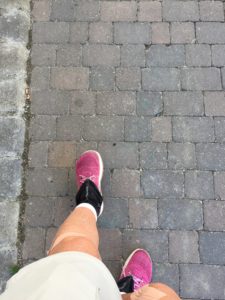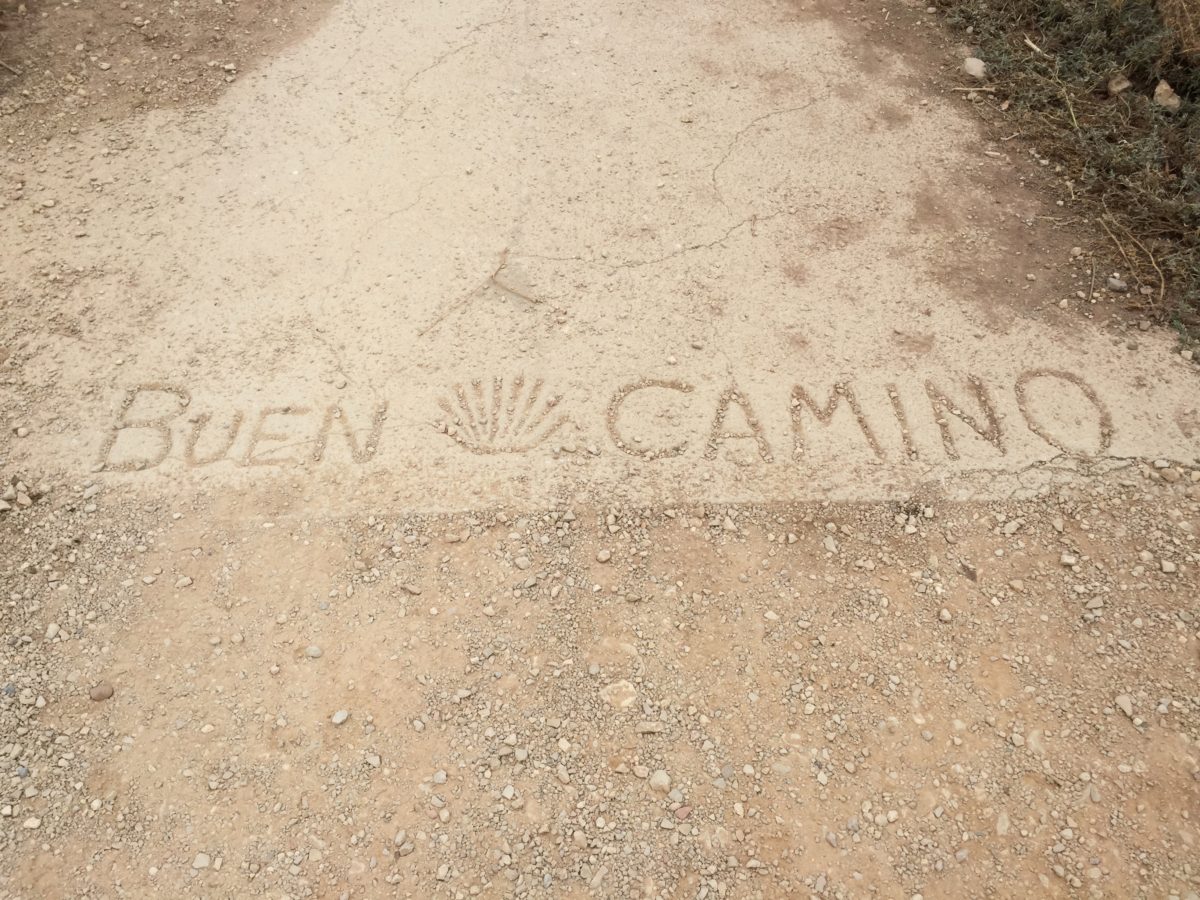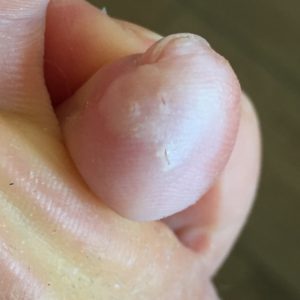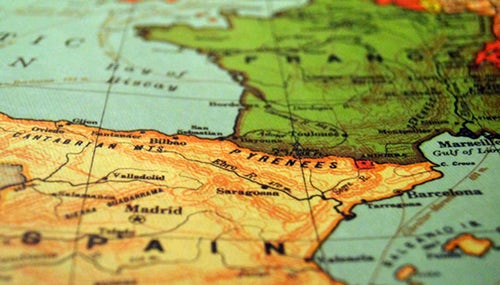I stood on the side of the rocky path and gasped for breath. My heart pounded so hard I thought my chest might explode. Sweat dribbled down my face and back.
This was brutal!
And I was not enjoying it.
The journey begins—
Chris and I were on our first day of walking the Camino de Santiago. We knew this day would likely be the toughest, although word on the street was that the next day—from Orisson, France to Roncesvalles, Spain—would be just as murderous, if not more so due to the steep elevation gain toward the end and then then precarious descent.
We would start in the medieval French town of St. Jean Pied de Pont, in the Basque country of southern France, at the beginning of the Pyrenees foothills. An elevation of 594 feet above sea level. In 5.1 miles, we would ascend to 3,614 feet.
By car, a 6-minute drive.
By foot, hours.
Not a trek for the faint of heart.
When Pierre, our adorable French bed and breakfast provider, waved his hand in dismissal and said in thickly accented English, “Oh, it is easy. No problem!” I chuckled. He was a strapping twenty-something who looked as though he could jog up and down that mountain all day and not feel tired.
In our giddiness to finally be on The Way after a year of planning, praying and physical preparation, the first mile or so didn’t seem so bad. And the view was gorgeous and the weather perfect, (fog and rain had been forecast for our start day, and we were relishing clear skies and warmth), which distracted us a little from our labors.
But then the real climbing started as we broke from the paved road and headed up the livestock path. We wobbled over and around sharp rocks as we made Z patterns up the switchbacks and stopped often to catch our breaths or adjust the position of our backpacks.
Then I found myself hiding in the shade of a tree, panting and sweating, looking down on all of those pristine white farmhouses with their identical red trim. My enthusiasm plummeted. Everything I had worried about in ascending the Pyrenees was coming to fruition.
Going in afraid—
Frankly, I had been terrified of hiking over those mountains. Hadn’t even wanted to go that route to begin with. I’d wanted to start the journey in Roncesvalles, like most other pilgrims, who seemed to be saner than us. This had been Chris’s idea, and he had pushed for it. “I think it would really add to the experience,” he said. “Make it special” Or something to that effect.
Honestly, I was more than a little miffed he was interjecting his plans into myGod-directed pilgrimage. Shouldn’t Ibe the one making the route decision? Nearly everything I read about those mountains talked about them in terms of the “much-feared” Pyrenees; how deadly they could be in bad weather.
But I caved in and tried to train by walking around our 3000-foot elevation, hilly neighborhood, and in Tucson’s mountains. “Remember, Andrea,” he said. “You live in a city with some of the most rugged mountains in the world. Those Pyrenees won’t be anything compared to them!” Humph, how does he know that? I thought. He’s only seen pictures of them.
His pep talk only dampened my worry for a couple of days. I was so worried about it I had a major meltdown the day before we departed Tucson. (The stress of having to prepare to leave the country for a month, with making sure my elderly mother was provided for and calmed down, didn’t help.)
I sat on the family room couch, pounding my fists on my knees and yelling at Chris about how terrified I was of hiking over the Pyrenees, berating him for how he had pushed me to go over those Pyrenees, and screaming and wailing that I didn’t want to hike over those Pyrenees. Ever!
He’d knelt down before me, gathered my hands in his and apologized. Then he encouraged me by saying that if I didn’t want to go, and it was too rough, we could take a cab over the mountain.
Ha! Now here we were, fulfilling what I had feared: Me and my beaten up knees and nodule-sprinkled lungs weren’t going to make it.
But while you can take the athlete out of the competition, you can’t take the competition out of the athlete. I was already on this mountain and determined to fight on.
After my umpteenth stop to slow my heart rate down, we pressed on. Not long after, Chris must have had a revelation because he padded up behind and whispered in my ear: “Don’t forget your training, Mrs. Owan. You should be zigzagging up this mountain.”
Eureka!!! “You’re right!” I responded. “I’d forgotten. All of my hill work at home, zigzagging up our foothills. Thank you for reminding me!”
My giddiness returned as I shifted my backpack again and re-clasped my hiking poles.
And up I went. Crisscrossing the path, weaving around other pilgrims as I greeted them with a wide smile and hearty “Buen Camino!” (The standard Spanish “howdy do” you give other pilgrims as you pass them.)
My heart rate and breathing slowed even as I leaned heavily on my poles. The walk intensity dropped to a level just above feeling easy. And my confidence and enjoyment levels shot up.
It was then I knew that I was going to make it over those mountains.
And thank Chris for pushing for this route.
Even with all of our panting and water breaks, we maintained a rigorous pace and arrived at the Orisson refuge with plenty of time to shower, wash and hang our clothes, enjoy a hot chocolate on the deck overlooking the rolling pastoral vistas of wheat, Basque sheep, cows, and work horses and village of St. Jean, take a nap and socialize with other pilgrims before the 7:00 PM dinner.
And I didn’t forget my zigzagging the rest of the journey, even on the descents. It saved my decrepit knees from disintegrating and the pilgrimage from potentially ending in disaster.
Why zig zag?
Like a switchback trail that cuts off the slope of a mountain, making it easier to climb or ascend it, (even though it inevitably increases the mileage you walk), zigzagging across a moderate to steep path decreases the slope—and difficulty—of the trail. I even used the technique on narrow trails, zig, zag, zig, zag, zig, zag. Shorter steps. Pivot, walk, pivot, walk. And use your poles to maintain your balance and disperse even more of the load, away from your hips and knees.
Like using ski poles as you zigzag down a mountain.
I encourage you to give it try on your next hike with a tough grade. I’m here to testify that it will likely increase your hiking joy and success rate. And let me know if you notice a difference.
Until next week,
Buen Camino!
(And happy zigzagging!)
Blessings,
Andrea
May you prosper in all things and be in health, just as your soul prospers (3 John 2).
Photo by Raphael Biscaldi on unsplash.com
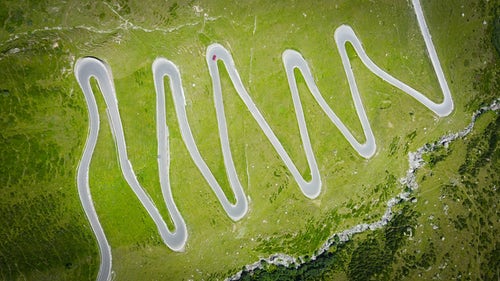
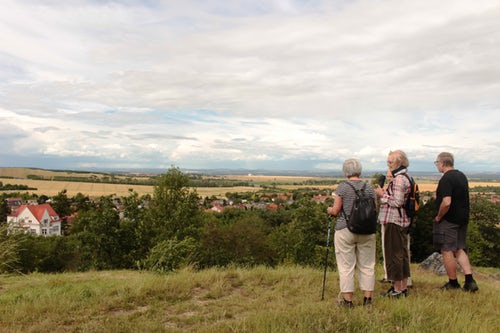

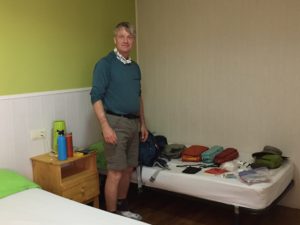 When you’re preparing to leave one place you know you won’t be returning to and walking 5 – 15 miles to another location, you plan carefully. You spend some time thinking about what you’re going to wear, how you’re going to pack, in case the weather changes and you need to shed a jacket or get to your rain gear and poncho in a hurry. If you happen to leave something back at the place you slept, you think long and hard about whether you really need it. About whether or not you can buy a replacement in the next tiny village you sleep in.
When you’re preparing to leave one place you know you won’t be returning to and walking 5 – 15 miles to another location, you plan carefully. You spend some time thinking about what you’re going to wear, how you’re going to pack, in case the weather changes and you need to shed a jacket or get to your rain gear and poncho in a hurry. If you happen to leave something back at the place you slept, you think long and hard about whether you really need it. About whether or not you can buy a replacement in the next tiny village you sleep in.